2015-2024 Cluster Students
Cluster Students listed here entered the program in the years indicated.
- 2024 Cluster Students
- 2023 Cluster Students
- 2022 Cluster Students
- 2021 Cluster Students
- 2020 Cluster Students
- 2019 Cluster Students
- 2018 Cluster Students
- 2017 Cluster Students
- 2016 Cluster Students
- 2015 Cluster Students
2024 Cluster Students

Maddie Briggs
PhD Adviser: Neha Kamat

Cheng Duan
PhD Adviser: Laura Lackner

Yara Jabbour Al Maalouf
PhD Adviser: Keith Tyo
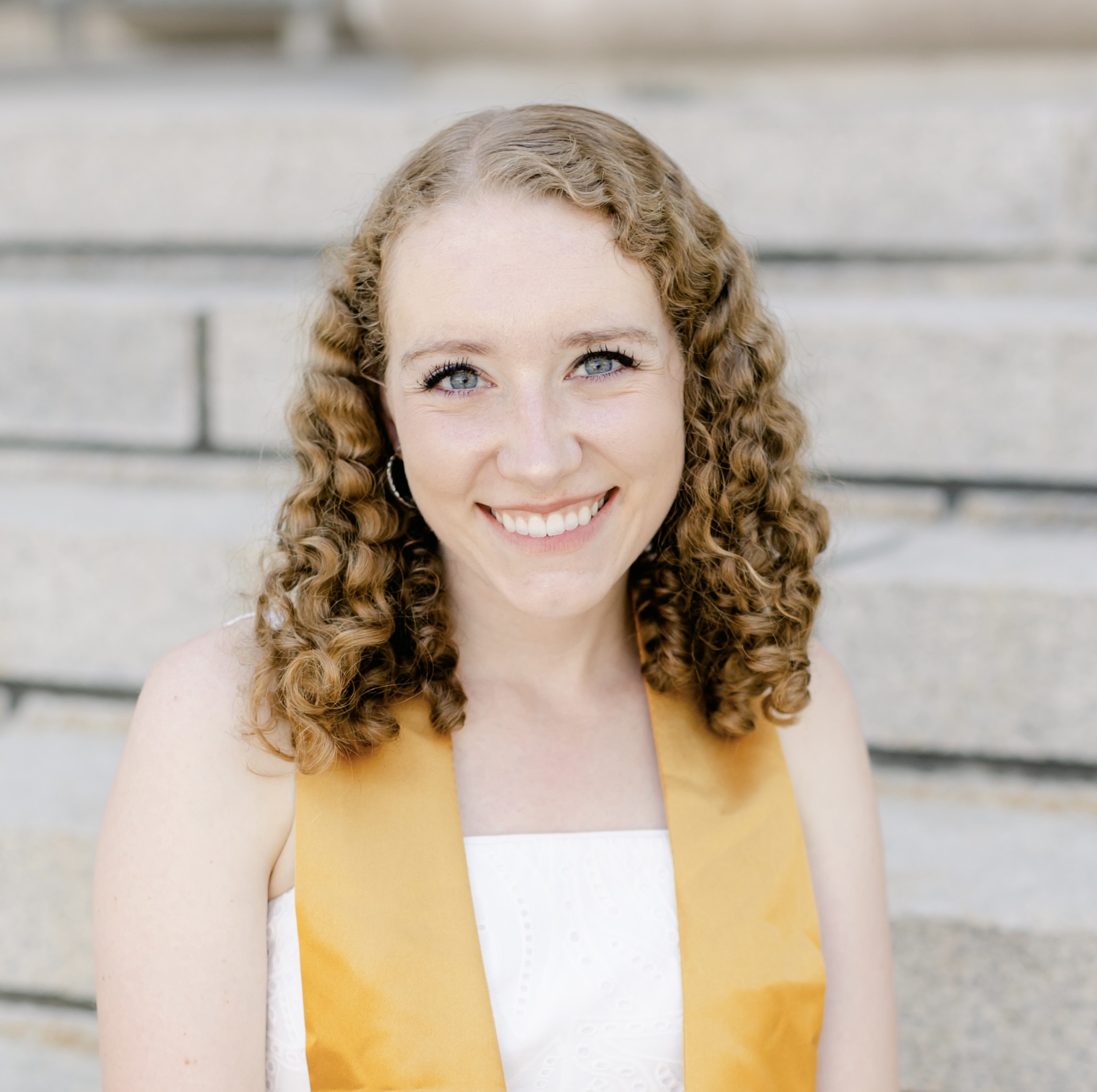
Madeline Mills
PhD Adviser: Danielle Tullman-Ercek

Lauren Redus
PhD Adviser: Josh Leonard
Doctoral Research Project: A promising, emerging therapeutic technology is “living pharmacies,” in which mammalian cells are genetically engineered and then implanted into a patient to produce biological therapeutics in situ. A key challenge is developing strategies for controlling the production of such therapeutics; to address that goal, my project focuses on developing genetic circuits that make in situ production controllable, safe, and effective. Our work focuses on enabling in situ production of a promising class of drugs called glucagon-like peptide-1 receptor agonists (GLP-1 RAs). Treatment of type 2 diabetes and obesity with GLP-1 RAs is promising, but treating by injection of a recombinant drug is expensive and availability can be limited by supply shortages, leading to health disparities or poor outcomes. My project focuses on developing a living pharmacy to address these challenges. I aim to design an electrically inducible gene circuit that, when implemented in a cell, drives production of GLP-1 RAs on-demand while employing synthetic biology control technology to enhance productivity, durability, viability, and safety. Our hope is that this technology will validate a general strategy for producing biological therapeutics on-demand, with durable and tunable production, to improve the treatment of many diseases.
2023 Cluster Students
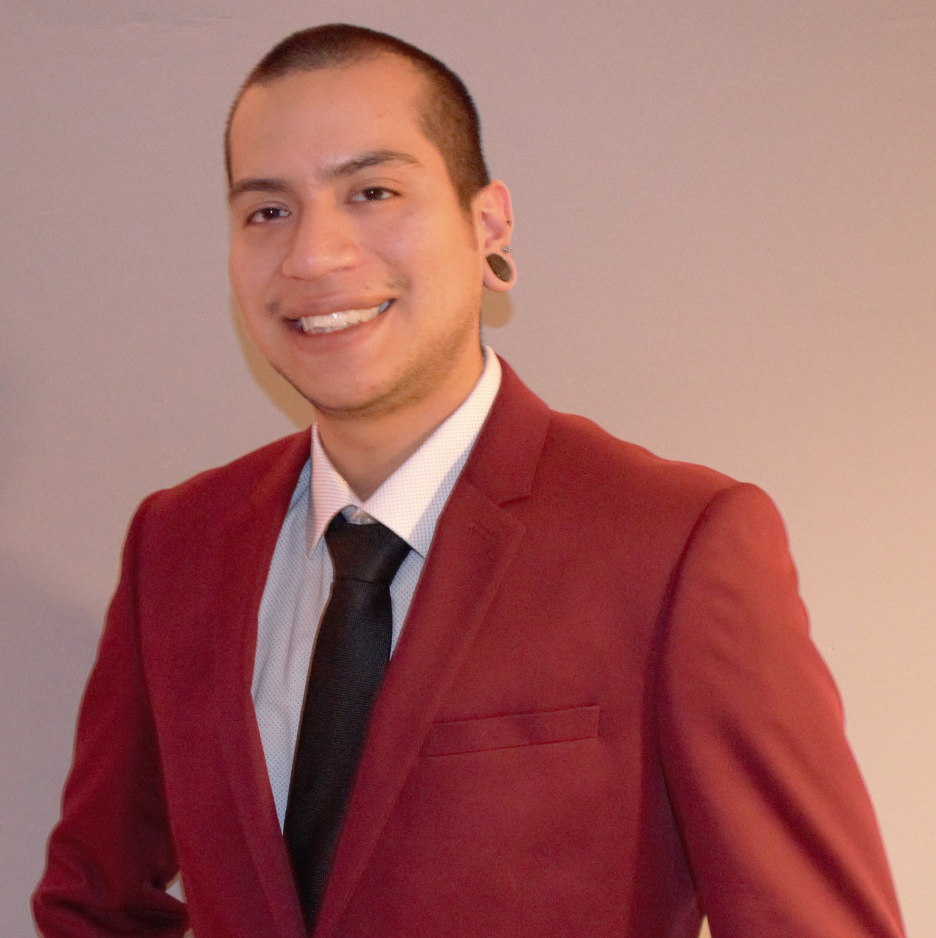
Roger Alvarado
PhD Adviser: Danielle Tullman-Ercek
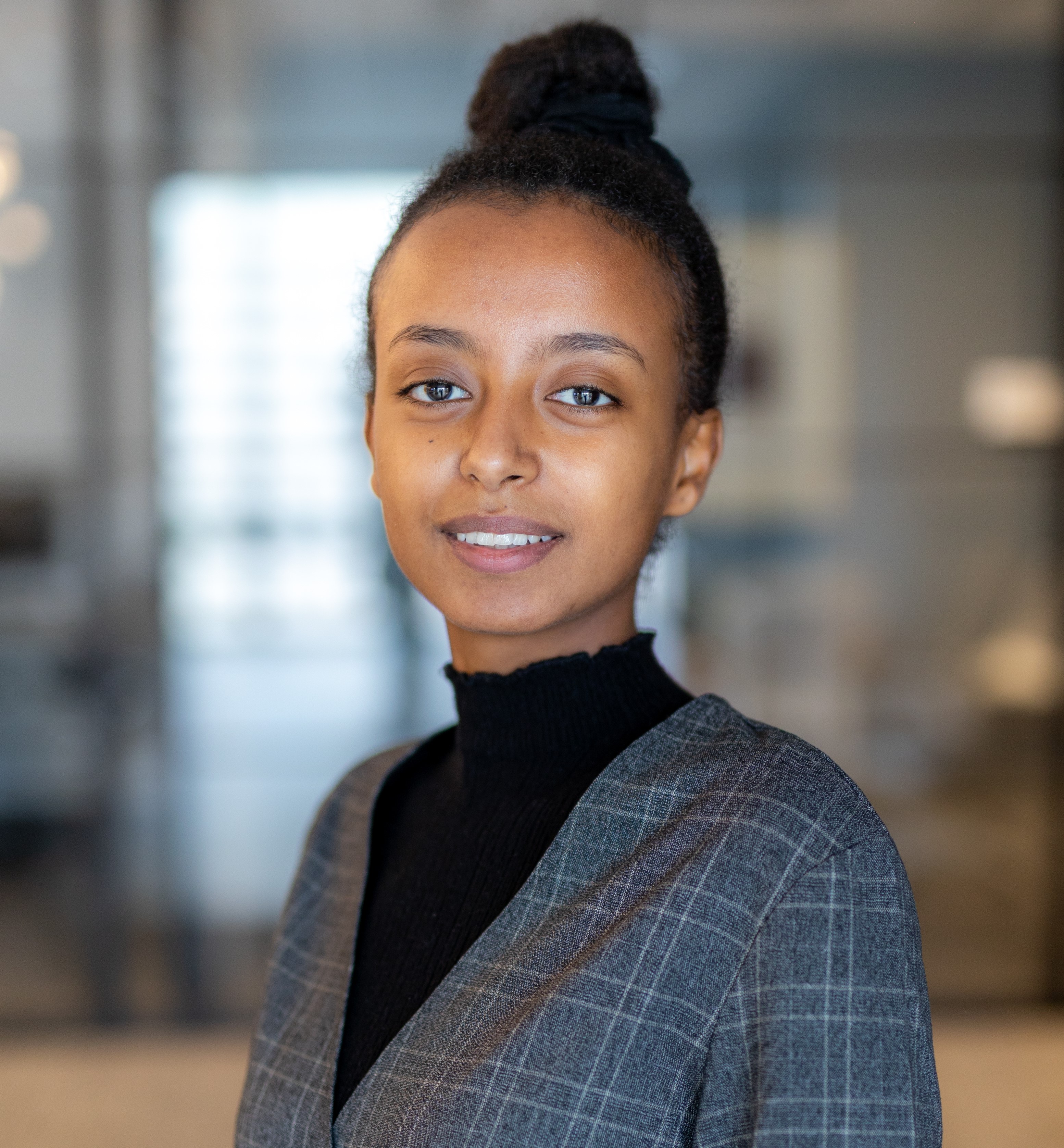
Herma Demissie
PhD Adviser: Julius Lucks

Manuel Fierro Cota
PhD Adviser: Irina Balyasnikova
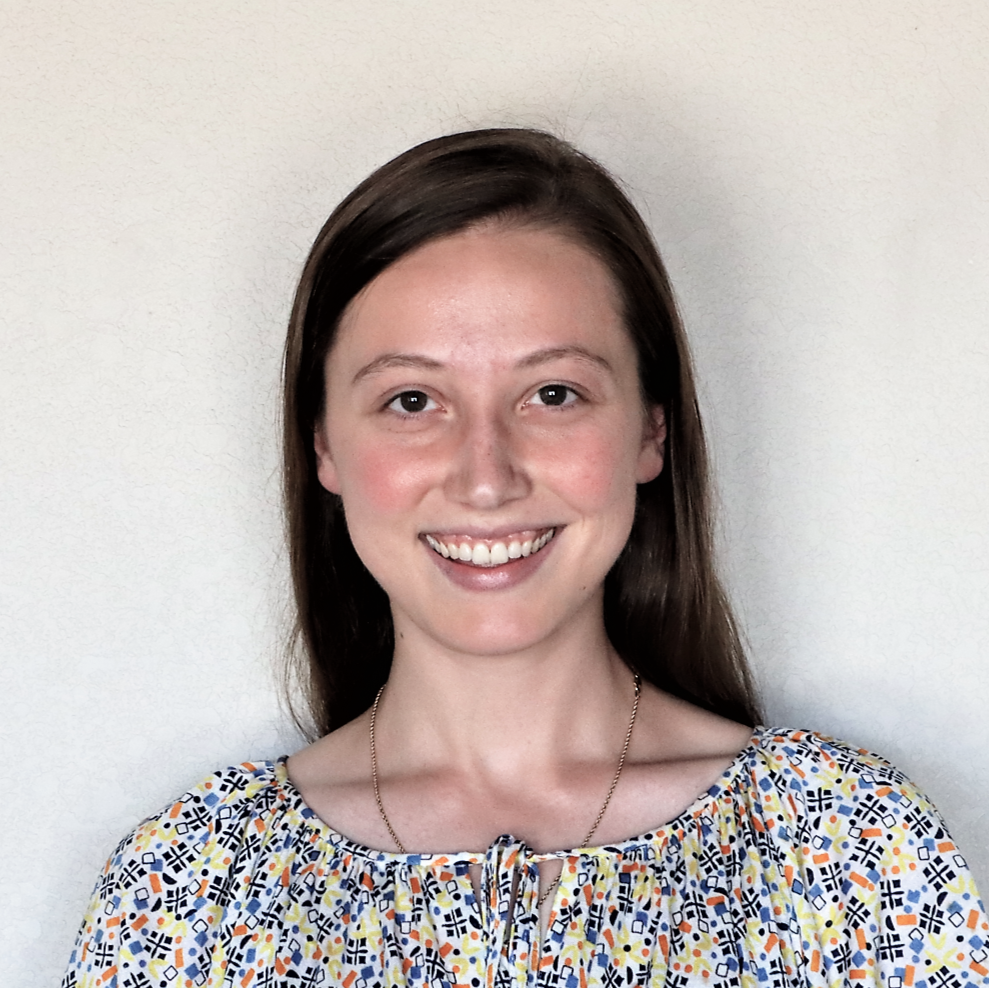
Michaela Hennebury
PhD Adviser: Derk Joester

Stefan Pate
PhD Adviser: Keith Tyo
Doctoral Research Project: I investigate microbial metabolism and its ability to adapt on an hours-long timescale (regulation of enzyme-expressing genes) and on a generations-long timescale (evolvability). I hope gaining a better understanding of these forms of adaptation will improve our ability to design sustainable bioprocesses that meet the material and energetic demands of society.
2022 Cluster Students

Yash Chainani
PhD Adviser: Keith Tyo

Tanu Priya
PhD Adviser: Gabe Rocklin
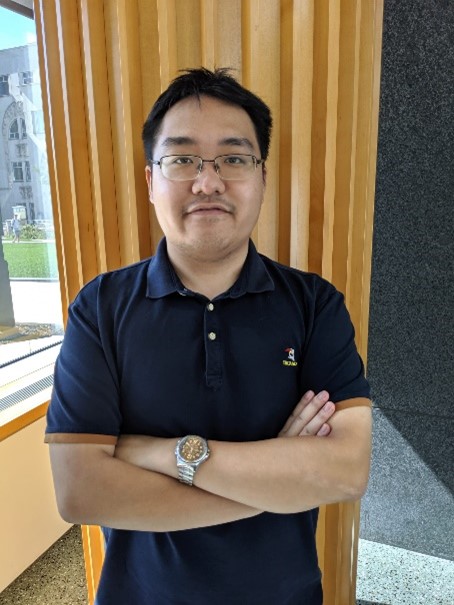
Taojunfeng Su
PhD Adviser: Neil Kelleher
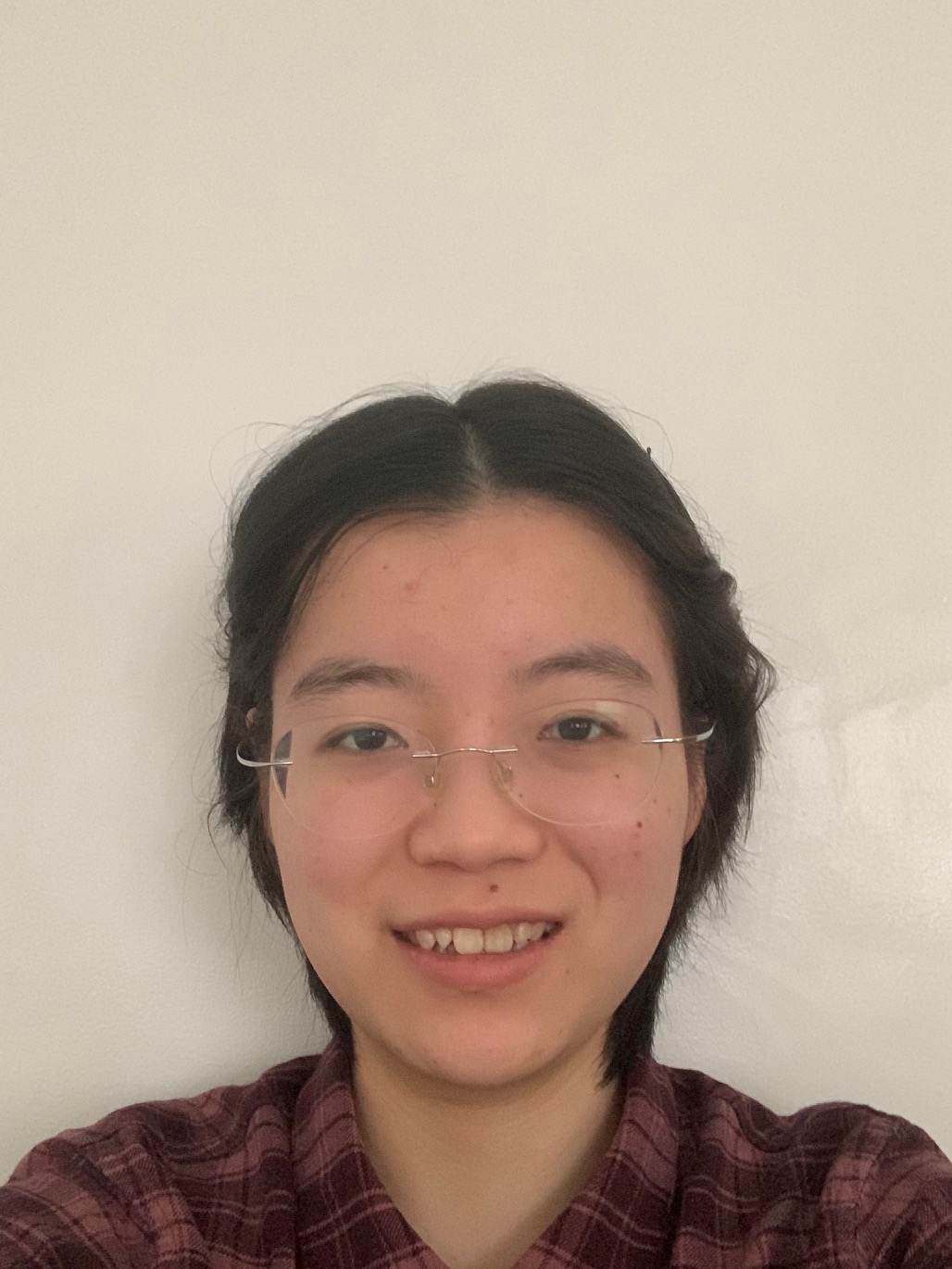
Feihong Xu
PhD Adviser: Luis Amaral
2021 Cluster Students
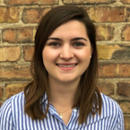
Eleanor Clark
PhD Adviser: Christian Petersen

Amparo Cosio
PhD Adviser: Josh Leonard
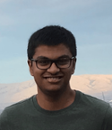
Rohin Devanathan
PhD Adviser: Keith Tyo
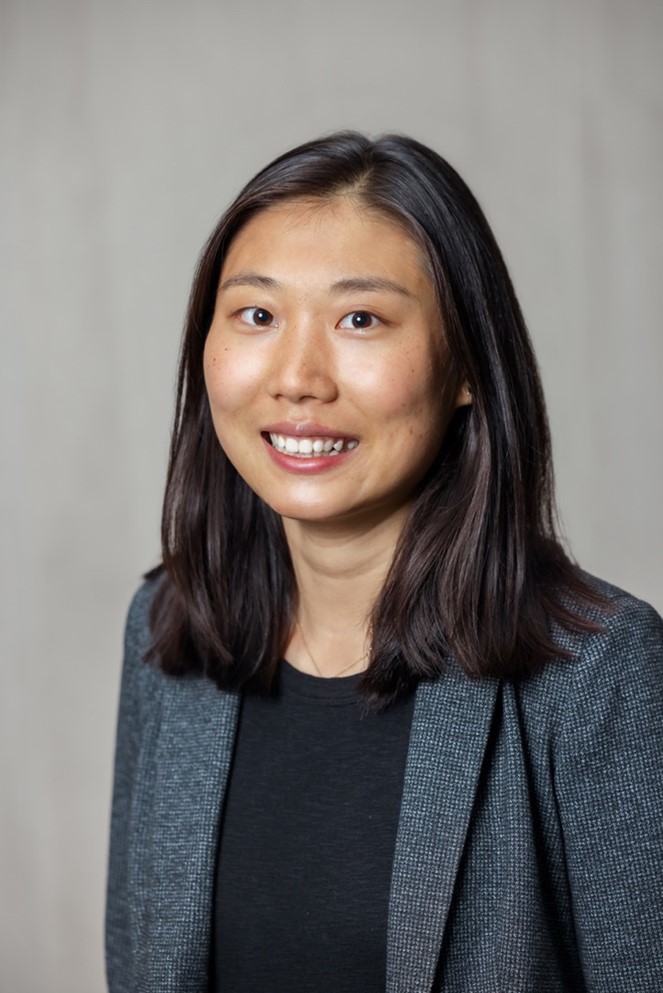
Jenni Li
PhD Adviser: Julius Lucks
Doctoral Research Project: Cell-free gene expression (CFE) systems are powerful synthetic biology technologies because of their ability to recapitulate sensing, gene expression, and metabolism without the complications of living cells. However, the development of cell-free circuits is significantly behind that of cellular circuits, due to the lack of large libraries of genetic parts and computer-aided design (CAD) tools that can be used to assemble parts into reliable circuits that operate in the dynamic, out-of- steady-state regime that distinguishes CFE systems from cells. Our ability to engineer and control CFE is also limited by RNA polymerase promiscuous activities and cross-talk between circuit components. I work on developing new libraries of parts that can be used as building blocks for a CAD framework to enable automated complex circuit design in cell-free systems. This new CAD tool will merge temporal control of genetic information processing in cell-free systems with spatial control of information propagation in patterned hydrogels to eliminate cross-talk between circuit components.

Austeja Staneviciute
PhD Adviser: Evan Scott
Doctoral Research Project: Chagas disease is a neglected tropical disease caused by the protozoa T. cruzi. Unfortunately, initial signs of disease are often absent and the chronic stages of infection include fatal myocarditis and megacolon. Due to the significant toxicity associated with current Chagas treatments, my project is focused on advancing therapy development through an improved drug formulation and the design of a nanoparticle drug delivery system. I am interested in investigating targeting moieties and immunoengineering to facilitate the reduction of parasitosis and inflammation.
2020 Cluster Students
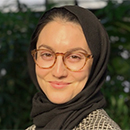
Olivia Barber
Grad Program: Environmental Engineering
PhD Adviser: Erica Hartmann
Doctoral Research Project: Antimicrobial resistance (AMR) is a rising concern that threatens to undermine modern medical practices and antibiotics. The human contribution to AMR remains poorly understood and practical strategies to stem the rise of resistance are even less defined. My work in the Hartmann lab examines how our disinfection regimes and widespread use of antibiotics impacts antibiotic resistance in the built environment. I am interested in quantifying the human impact on AMR and how it impacts health outcomes. My work also focuses on how proposed solutions to AMR, such as bacteriophage therapy, can reverse the current trend of resistance and allow continued use of antimicrobials in specific, critical circumstances.
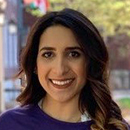
Sofia Gonzalez-Shuler
Grad Program: ChBE
PhD Adviser: Milan Mrksich
Doctoral Research Project: One of the molecular candidates responsible for neuronal damage seen in Alzheimer’s Disease (AD) is the peptide amyloid-beta. Amyloid-beta aggregates into oligomers (ABOs) and fibrils in brain tissue. Evidence discovered by the Klein laboratory at Northwestern suggests that these ABOs bind to neuronal cell surfaces where they induce synaptic degradation, oxidative stress, and cell death. A leading hypothesis is that ABOs – and not smaller units such as monomers or dimers, or larger aggregates that form fibrils – are responsible for the adverse neural effects that produce AD. This has led our collaborators, the Klein laboratory, to develop antibodies capable of selectively binding to ABOs of various sizes and conformations for use in research, diagnostics, and therapeutics. Specifically, the Klein group has developed several single-chain variable fragments (scFvs) and monoclonal IgGs with selectivity for ABOs. As evidence continues to mount showing the importance of the specific forms of AB aggregation, I can expect that the form of therapeutic candidates will also be of significance as these candidates attempt to selectively bind to and neutralize the ABO toxicity. However, modifications to the form of antibodies typically fall within a relatively confined design space and continue to pose significant technical challenges. The Mrksich laboratory has developed a modular platform, called the megamolecule strategy, to synthesize multi-protein assemblies by covalently joining protein domains to with both precision and efficiency – overcoming the constraints of synthesizing typical antibody scaffolds. These molecules are made by fusing enzymes or antibody fragments with a connection protein domain, where a nucleophilic residue in the active site of the connecting domain can be irreversibly modified by a targeted covalent inhibitor on a PEG backbone. I propose the use of this platform to generate libraries of anti-ABO megamolecule antibodies varying in size and geometry to (i) identify designs with both greater selectivity and affinity for the appropriate ABO structures and (ii) to enhance our ability to both neutralize and disrupt ABO formation pathophysiology.
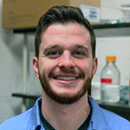
Taylor Gunnels
Grad Program: BME
PhD Advisers: Neha Kamat and Josh Leonard
Doctoral Research Project: The ability to engineer biological cells to perform custom sense-and-respond functions has wide-ranging applications including environmental monitoring, diagnostics, and therapeutic delivery. Unfortunately, cellular biosensing systems may be subject to genetic drift or instability that impairs their performance and may pose biocontainment risks if they are released into the environment. I aim to overcome these challenges by functionalizing amphiphilic vesicles with engineered protein receptors to generate a vesicle-based biosensing system. By leveraging membrane and protein engineering strategies from the Kamat and Leonard Labs, I then hope to utilize this biosensing system for use as in vivo diagnostic and therapeutic tools.

Ruth Lee
Grad Program: MSE
PhD Adviser: Samuel Stupp
Doctoral Research Project: Peptide amphiphiles are biocompatible molecules that self-assemble into nanostructures in water and have been extensively studied for applications in regenerative medicine and tissue engineering. However, current peptide amphiphile systems are static and do not respond to dynamic cues in the microenvironment of cells. Currently I am working on creating stimuli-responsive peptide amphiphile systems using various nanoscale materials characterization techniques. By utilizing different types of external stimuli, we can control the stiffness and viscoelasticity of the resulting material to mimic the extracellular matrix of the cell. My ultimate goal for this project is to develop biocompatible, biomimetic robotic soft matter for biomedical applications and to study the cell-material interactions at various length scales.
2019 Cluster Students

Victoria Cooley
PhD Adviser: Derk Joester
Doctoral Research Project: Tooth enamel is an acellular, highly mineralized tissue designed to protect teeth during the stress of chewing. Nanowires of hydroxyapatite are bundled together by the thousands to form enamel rods, which are themselves organized into stacks or woven patterns to give bulk enamel. The chemistry of enamel is also hierarchical, and small deviations in the composition or structure at one length scale can disrupt organization at a larger scale, possibly compromising the enamel's overall performance. Amelogenesis, the developmental process that gives rise to enamel, is poorly understood, which limits our ability to treat or prevent congenital enamel defects in humans. My current project compares the chemistry and structure of enamel across length scales in healthy, wild-type mice to defective enamel in novel knockout mouse models. A combination of this quantitative materials data with transcriptomic and proteomic information enables us to map the role of several key proteins during amelogenesis.

Jacob Martin
PhD Adviser: Linda Broadbelt
Doctoral Research Project: Metabolic engineering with non-model organisms presents may opportunities in small molecule production due to the wide variety of metabolic capabilities, including the anaerobic fermentation of waste gas streams or plant-based byproducts to valuable chemicals. These cheap and renewable feed sources can then be converted to products ranging from biofuels to small molecule drugs. However, these non-model microbes are slow growing, less well-characterized, and more difficult to genetically modify than model organisms. Additionally, the same complexity that allows these microbes to produce so many interesting compounds makes the task of testing all possible factors experimentally infeasible. Therefore, it is important that these efforts are informed by computational tools. My Ph.D. research will focus on undertanding how to use in vitro - or "cell free" - metabolic systems to predict in vivo metabolism using computational models of metabolism. This work aims to both inform metabolic engineering efforts with cell-free experiments and use the findings of these models to better understand the differences between in vitro and in vivo metabolism.

Walter Thavarajah
PhD Adviser: Julius Lucks
Doctoral Research Project: Realizing the humanitarian goal of universally accessible clean drinking water will require significant advances in water quality monitoring technology. Existing gold-standard methods require expensive equipment that necessities centralized analysis and precludes deployment in resource-limited areas, and many existing field-kits are lacking in cost, reliability, speed, or sensitivity. To address this need, I am working to engineer and optimize riboswitches for improved performance in cell-free extract. Riboswitches exist for many ligands lacking characterized cognate transcription factors, and the smaller design space of RNA relative to proteins greatly simplifies the design of synthetic riboswitches for priority targets. Combined with the ability for cell-free reactions to be freeze-dried for transport and long-term storage, this work stands to offer a simple, affordable means for anyone of any technical skill level to take agency over the quality of their drinking water.
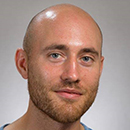
Matthew Verosloff
PhD Adviser: Julius Lucks
Doctoral Research Project: My research focus on elucidating how the different intrinsic aspects within RNA interact in order to modulate the desired function of the macromolecule. Through these principles we are able to design various novel synthetic oligonucleotides with the capacity to regulate all aspects of the central dogma in a circuit like manner. These genetic circuits are applied within cell free extracts to create point of care diagnostics capable of responding to virtually any pathogen of interest.
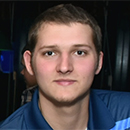
Curt Waltman
PhD Adviser: Monica Olvera de la Cruz
Doctoral Research Project: My research is on the self-assembly of charged soft matter systems especially those relevant to biology and biotechnology. I use coarse grained molecular dynamics simulations to probe assembly pathways and equilibrium system properties. This approach is especially useful given the length scales and complexity of systems involving large numbers of macromolecules such as synthetic polymers, nucleic acids, and protein complexes. I am currently finishing a project on the in vitro assembly of the SV40 VP1 protein capsid for potential applications such as drug delivery and catalysis and beginning a project on using charged, amphiphilic, random copolymers for water purification.
2018 Cluster Students
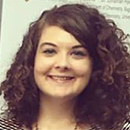
Katelyn Dray
PhD Adviser: Josh Leonard
Doctoral Research Project: With recent advancements in the field of synthetic biology, it is now possible to engineer cells to respond to specific environmental cues in precise, user-defined ways. Although there now exist a number of technology platforms for engineering specific cellular functions, it remains challenging to match these technologies to new applications, and integration of distinct biological receptor systems (those involving more than one type of receptor) remains particularly difficult. In collaboration with Dr. Neda Bagheri and Dr. Joshua Leonard, I aim to develop a framework that will facilitate quantitative comparisons across different biological receptors, therefore enabling the matching of specific biosensing goals with receptors that utilize different sensing modalities. The framework, which will comprise of experimental characterizations and mechanistic computational models describing receptor function, will then be used to develop novel functionalities by integrating individual receptors with one another to create integrated receptor systems with unprecedented specificity.
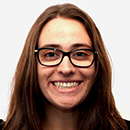
Hailey Edelstein
PhD Adviser: Josh Leonard
Doctoral Research Project: Programmable cell-based devices are rapidly emerging as a clinically relevant technology that leverages cells’ natural ability to compute with a high level of control. Creating cell-based therapies requires equipping cells with new machinery to interface with and treat specific physiological symptoms. This strategy already showed promise with blood cancer immunotherapy: the engineering of T-cells with chimeric antigen receptors (CARs) that confer the ability to recognize and respond to a target antigen. Extension of CAR T-cells to a broader range of cancer types remains challenging because solid cancer cells often lack unique, targetable surface antigens and the tumor microenvironment suppresses immune function. Although immune-potentiating factors to overcome suppression have been identified, their systemic administration can generate dangerous side effects. Intratumoral delivery of such factors is promising, however, technologies to mediate this type of localized delivery are lacking. To meet this need, I am using biosensing technologies developed in the Leonard lab to devise a novel cell-based therapeutic strategy to enable programmable, local production of immune-modulating factors at the tumor site.

Kirsten Jung
PhD Adviser: Julius Lucks
Doctoral Research Project: Despite the severity of water insecurity, standard water quality testing kits currently used are expensive, difficult to use, and take days to generate conclusive results. In the Lucks lab, I am working on developing a fast, robust, sensitive, and user-friendly diagnostic capable of detecting water contaminants using chemically defined cell-free transcription reactions. Cell-free transcriptional biosensing not only alleviates the biocontainment concerns associated with whole-cell biosensors but also improves the speed and sensitivity of cell-free translational biosensing by eliminating the reliance on protein synthesis and crude extracts. Specifically, the goal of my project is to develop cell-free transcriptional biosensors using a DNA strand displacement readout. DNA strand displacement is a promising way of further increasing speed and sensitivity of transcriptional biosensors due to its rapid reaction kinetics and ability to devise autocatalytic cascades that provide signal amplification. Combined with freeze-drying techniques, this platform will make available biosensors that are rapid, field-deployable, easy-to-use, and accessible to the public.
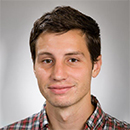
Alexander McFarland
PhD Advisor: Erica Hartmann
Doctoral Research Project: The effect of chemicals in everyday household products on the indoor bacterial community is unknown. Multidrug efflux pumps found in many bacteria have been shown to efflux both biocides, which includes antimicrobial chemicals used in cleaning and personal healthcare products, and antibiotics. It has been hypothesized that exposure to biocides in the indoor environment can select for increased expression of multidrug efflux pumps and involuntarily co-select for antibiotic resistance. My project will analyze the diversity in composition and expression of the multidrug efflux pump MexAB-OprM in closely related Pseudomonas species and their contribution to biocide resistance and antibiotic cross-resistance. Results will hopefully lead to development of better in silico identification of MexAB-OprM homologs that are likely to confer increased resistance to both biocides and antibiotics.
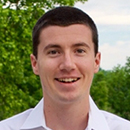
Justin Peruzzi
PhD Adviser: Neha Kamat
Doctoral Research Project: Advances in synthetic biology have allowed for the construction of increasingly complex cell-mimetic systems. The aim of my work in the Kamat Lab is to design and characterize how properties of synthetic vesicle systems may be tuned to sense and respond to their environment. Ultimately, these systems may be used in applications ranging from medicine to environmental monitoring.

Grant Rybnicky
PhD Adviser: Michael Jewett
Doctoral Research Project: My research in the Jewett lab is focused around prototyping novel CRISPR systems in vitro. Using cell free protein synthesis, we seek to probe naturally occurring CRISPR systems and characterize interactions between protein, RNA, and DNA components. Specifically, I am investigating type I-B CRISPR systems encoded by industrial clostridia strains. Through understanding these mechanisms, we can develop enhanced tools for engineering clostridia towards the production of high value molecules from waste gas substrates.

Katie Warfel
PhD Adviser: Michael Jewett
Doctoral Research Project: Conjugate vaccines are comprised of a polysaccharide antigen, commonly displayed on the surface of a pathogenic bacteria, covalently attached to an immunogenic carrier protein. By presenting the polysaccharide antigen in this way, the vaccine creates lasting immunological memory of the polysaccharide. Current production processes rely on chemical synthesis to attach these bacterial oligosaccharides (O-antigens) onto proteins. However, these chemical attachment methods require culturing pathogenic bacteria and lack site specificity. In nature, a class of enzymes called oligosaccharyltransferases (OSTs) attach bacterial oligosaccharides to carrier proteins and are a site-specific, scalable alternative to chemical synthesis of vaccines. In the Jewett lab, I aim to further understand OSTs and explore vaccine building platforms by studying in vitro glycosylation systems using cell-free protein synthesis (CFPS).
2017 Cluster Students
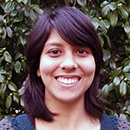
Charlotte Abrahamson
PhD Adviser: Danielle Tullman-Ercek
Doctoral Research Project: The growing threat of antibacterial resistance necessitates the development of new technologies to combat this epidemic. In the Jewett and Tullman-Ercek labs, I am working to create a robust cell-free protein synthesis-based technology for site-selective glycan conjugation to virus-like-particles (VLPs) for use as conjugate vaccines. Cell-free methods offer a simpler, cost-effective alternative to existing conjugate vaccine strategies using protein glycan coupling technologies. Specifically, I propose to integrate state-of-the-art cell-free protein synthesis systems with two orthogonal protein glycan coupling technologies, which include the use of non-standard amino acids as handles for chemical conjugation and cell-free glycosylation, to produce clinically relevant VLPs outfitted with pathogen-specific oligosaccharides and immune stimulants. This will result in a completely cell-free method to express, assemble, and modify VLPs with multiple glycans in a site-specific manner.

Emma Coughlin
PhD Adviser: Teri Odom
Doctoral Research Project: My research focuses on the use of nanomaterials as therapeutics. Antibiotic resistance is a growing global concern, therefore, I am investigating the use of gold nanostars (AuNS) and nanowrinkles as a two-fold approach to alternative antibiotics. AuNS have optical properties which can be utilized for photothermal therapy, and nanowrinkles can be precisely patterned to attract bacteria. The goal of my research is to combine AuNS and nanowrinkles to capture then kill bacteria as an alternative treatment for skin wounds instead of orally administered antibiotics.
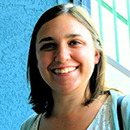
Taylor Nichols
PhD Adviser: Danielle Tullman-Ercek
Doctoral Research Project: Bacterial microcompartments (MCPs) are protein-based organelle-like structures that function natively in certain bacteria to encapsulate specific metabolic pathways. The aim of my research in the Tullman-Ercek group is to engineer MCPs for novel functions, specifically the encapsulation of non-native metabolic pathways of industrial relevance. To this end, I am working to characterize the regulation and localization mechanisms of different native MCP components. Leveraging this knowledge of the native system, in combination with previously developed tools for cargo encapsulation and microcompartment engineering, will enable us to develop MCPs into tunable nanobioreactors.
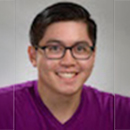
Patric Ho
PhD Adviser: Xiaomin Bao
Doctoral Research Project: Many human diseases such as psoriasis, chronic wounds, and cancer are caused by the disruption of somatic tissue homeostasis which requires the delicate balance between progenitor self-renewal and terminal tissue differentiation. In epidermal tissue, the Bao Lab has previously demonstrated that the Brg1/Brm Associated Factors (BAF) chromatin remodeling complex functions to repress differentiation and sustain proliferation of undifferentiated progenitors. However, in the process of terminal tissue differentiation, BAF is required for activating differentiation gene expression. It remains unclear how BAF switches from a repressor to an activator to promote terminal differentiation. Using human epidermal tissue as the primary research platform, I am interested in characterizing the role of post-translational modifications in regulating this BAF switch. Ultimately, my research can provide unique insight into the pathogenesis of human diseases, leading to the development of novel therapies.

Ziyin Huang
PhD Adviser: Chad Mirkin
Doctoral Research Project: Spherical nucleic acids (SNAs) are novel three-dimensional constructs, which typically consist of a nanoparticle core densely functionalized with highly oriented DNA or RNA. These structures have revolutionized aspects of biomedicine and biology due to their unique architecture-dependent properties, including their high cellular uptake and resistance to enzymatic degradation (compared to linear oligonucleotides of the same sequence). My work focuses on designing, synthesizing, and studying new classes of biocompatible and biodegradable polymeric SNAs useful in pharmaceutical development and immuno-stimulation. I am also working to develop controlled release mechanisms for nucleic acids and cargos carried by SNAs using both analytical and computational tools.

Andrew Hunt
PhD Adviser: Michael Jewett
Doctoral Research Project: In the Jewett lab, I am working on designing protein-based biomaterials containing non-standard amino acids with the goal of developing biomedically relevant wet adhesives. Biological organisms have developed protein-based strategies for wet adhesion, a problem that engineers and chemists have historically struggled to solve. These protein-based adhesives rely on a variety of post translational modifications to enhance adhesion. In spite of much effort, the role of individual residues and modifications within these adhesive proteins are still not yet fully elucidated. My project seeks to simultaneously utilize non-standard amino acids to study the role of post translational modifications in natural adhesive proteins and to engineer useful biomaterials proteins to mimic the adhesive properties of these natural glues. Ultimately, we hope to develop a novel class of protein-based tissue adhesives for use in wound healing and wearable electronics.
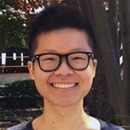
Peter Tran
PhD Adviser: Arthur Prindle
Doctoral Research Project: While bacteria are single celled organisms, we now understand that bacteria on our planet prevalently reside in structured multicellular communities known as biofilms. The Prindle Lab has discovered that cells in a biofilm communicate electrochemically, resulting in rapid spatial and temporal coordination of the population. My project focuses upon the combination of microfluidics, bioelectronics, and microscopy to 1) interrogate the electrochemical and metabolic dynamics of biofilms in their native context and 2) engineer this new intercellular communication modality for biofilm sense and response function. By understanding the design rules behind biofilm communication, we will enable a robust platform for synthetic biology beyond the lab bench and create microbiome systems for remote diagnosis and treatment.
2016 Cluster Students
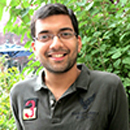
Narasimhan Balakrishnan
2015 B.T. Chemical Engineering, Indian Institutie of Technology Madras
PhD Adviser: Neda Bagheri
Doctoral Research Project: My research involves the computational investigation of circadian oscillators in a single cell and a coupled (or networked) setting. The goal of my research is to: 1. Improve model identification strategies for such complex biological systems to make models less sloppy, and 2. Analyse the effect of heterogeneity (in terms of kinetic parameters) on the phase response of circadian oscillators, in a single cell as well as coupled setting.

Nicholas Karabin
2013 BS Chemical Engineering, Carnegie Mellon University
2013 BS Biomedical Engineering, Carnegie Mellon University
PhD Adviser: Evan Scott
Doctoral Research Project: Poly(ethylene glycol)-bl-poly(propylene sulfide) (PEG-bl-PPS) is an oxidation-sensitive diblock copolymer that self-assembles into a variety of nanostructures. By controlling the length of the hydrophobic PPS domain, we can dictate whether the material self-assembles into spherical micelles, vesicular polymersomes, or high-aspect ratio filomicelles (FMs). My work in the Scott lab has focused on altering the synthetic pathway of PEG-bl-PPS in order to produce surface reactive FMs that can be cross-linked into macroscopic scaffolds. By exploiting the inherent oxidation-sensitivity of PEG-bl-PPS to tailor FM-scaffold degradation, I hope to develop a platform capable of achieving the localized, sustained release of nanomaterial therapeutics for the modulation of tumor-induced immunosuppressive functions.

Elizabeth Pearson
2015 BS Chemical Engineering, Princeton University
PhD Advisor: Patrick Kiser
Doctoral Research Project: Successful prevention of HIV transmission remains an unmet challenge. The goal of my work is to develop an affordable technology that addresses these challenges in order to provide a more effective method of HIV prevention. I am developing a subcutaneous implant that can provide protection from HIV infection for at least one year by delivering antiretroviral drug at a uniform rate over this time period. The drug of choice, tenofovir alafenamide fumarate, has high potency, reduced side effects compared to other antiretrovirals such as tenofovir disoproxil fumarate, and an increased tendency to accumulate in lymphatic cells, which are primary sites of HIV replication. An implant such as this takes user behavior out of the HIV prevention equation – once the implant is received, the user will receive constant protection that does not depend on correct condom usage or adherence to a daily pill regimen.
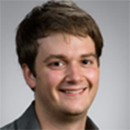
Andrew Younger
2011 BS Molecular Genetics, University of Rochester
PhD Adviser: Joshua Leonard
Doctoral Research Project: Efforts to engineer microbial factories have benefitted from mining biological diversity and high throughput synthesis of novel enzymatic ensembles, yet screening and optimizing metabolic pathways remain rate-limiting steps. Metabolite-responsive biosensors may help to address these persistent challenges by enabling the monitoring of metabolite levels in individual cells and metabolite-responsive feedback control. We are currently limited to naturally-evolved biosensors, which are insufficient for monitoring many metabolites of interest. Thus, a method for engineering novel biosensors would be powerful, yet we lack a generalizable approach that enables the construction of a wide range of biosensors. My thesis work involves developing a generalizable strategy for converting the wealth of natural ligand binding proteins into ligand responsive transcriptional regulators.
2015 Cluster Students

Greta Bauer
2013 BA Chemistry and Music, St. Olaf College
PhD Adviser: Vadim Backman
Doctoral Research Project: I plan on using the novel optical microscopy techniques developed by the Backman lab to study nanoscale alterations in cellular structure. While these microscopy techniques have been designed to be utilized for the early and minimally-invasive screening and detection of cancer, I will use them to study the biological mechanisms driving the cellular processes that cause these nanoscale alterations of nuclear structure associated with cancer and other disease states. Specifically, I will study the effects of nuclear remodelers such as histone deacetylases on the nanoscale structural remodeling of chromatin and how that alters the cell’s transcriptional activity. The understanding of how structural changes in nuclear architecture lead to functional consequences will guide us in developing more specific therapeutics for cancer.

Kavita Chandra
2012 BS Material Science Engineering, Massachusetts Institute of Technology
PhD Adviser: Teri Odom
Doctoral Research Project:
My research focus on the synthesis of anisotropic gold nanostars (AuNS) and their bio-medical applications. I worked on understanding relationship the synthetic conditions on AuNS size and shape. Currently I am investigating the seedless AuNS growth mechanism and optimization of post-synthesis separation.
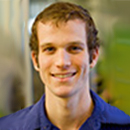
Robert Free
2011 BS Engineering Physics, The University of Oklahoma
PhD Adviser: Derk Joester
Doctoral Research Project: I hope to dictate the overall susceptibility of tooth enamel to dental caries (tooth decay) via modification of the amorphous interphase regions between apatite crystallites that constitute enamel. I hypothesize that controlling the solubility of the interphase near the enamel surface by altering its composition and structure will enable me to exert control over the caries susceptibility of the enamel system. I will explore the efficacy of various replacement chemistries to alter the interphase, characterize the resulting interphase structure and composition, and evaluate the degree to which my efforts modify caries susceptibility via in vitro simulated caries and in vivo caries models in rats.

Weston Kightlinger
2014 BS Chemical Engineering, The University of Tulsa
PhD Advisor: Mike Jewett
Doctoral Research Project: Glycosylation is the post-translational addition of complex sugar moieties (glycans) to proteins and is present in the majority of eukaryotic proteins as well as 70% of approved or preclinical protein therapeutics. Glycosylation patterns have been shown to effect protein specificities, therapeutic potency, protein localization within cells and organisms, and immunogenicity. Despite its importance, glycosylation is not well understood because it is mediated by the activity of many glycosyltransferases (GTs) with poorly characterized and diverse specificities. My project will use cutting-edge SAMDI mass spectrometry, cell-free protein synthesis (CFPS), and bacterial glycosylation technologies to measure the specificities and kinetics of thousands of previously uncharacterized GTs with the goal of developing an in vitro glycosylation platform for the rapid design and production of homogeneous, human-like glycoproteins. Producing preparative quantities of homogeneous glycoproteins would allow the scientific community to systematically assess the effect of glycan structure on protein function for the first time.
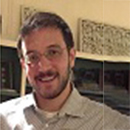
Phillip Lewis
2012 BS Biomeddical Engineering, Case Western Reserve University
PhD Adviser: Ramille Shah
Doctoral Research Project: My research focuses on utilization of 3D printing for the purpose of liver tissue engineering. I plan to use 3D printable hydrogels already developed in the Shah lab to spatially pattern hepatocytes along with non parenchymal cells such as endothelial cels, mesenchymal stem cells, and biliary epithelial cells (cholangiocytes). Utilizing biologically-inspired design along with bioactive extracellular matrix (ECM) derived 3D printable biomaterials, I plan to guide the morphogenesis of the finer structures of the liver lobule. I plan to investigate the role material properties of different ECM-derived inks play in the material's printability as well as the response of different cell types.
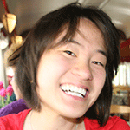
Jia Wu
2012 BS Bioengineering: Biotechnology, University of California San Diego
PhD Advisers: Neda Bagheri and Lonnie Shea
Doctoral Research Project: How do cells adopt different cell fates during developmental processes? How is it that, as cells adopt these fates, they lose their ability to give rise to other cell types? Recent high-throughput experiments have described the architecture of the transcriptional regulatory networks responsible for hematopoiesis. My research focuses on delineating the transcriptional programs that regulate blood cell differentiation and the subsequent effects on downstream genes.

Sherry Zhu
2012 BS Pharmacy, Shanghai Jiaotong University (China)
2014 MS Biomedical Engineering, Northwestern University
PhD Adviser: Guillermo Ameer
Doctoral Research Project: My research focus is centered on developing engineered vascularized tissue constructs with peptide modified thermoresponsive hydrogel for tissue regeneration purposes. These vascularized tissue constructs will be eventually applied to regenerate vascularized tissue/organ to restore blood perfusion at the ischemic sites.
